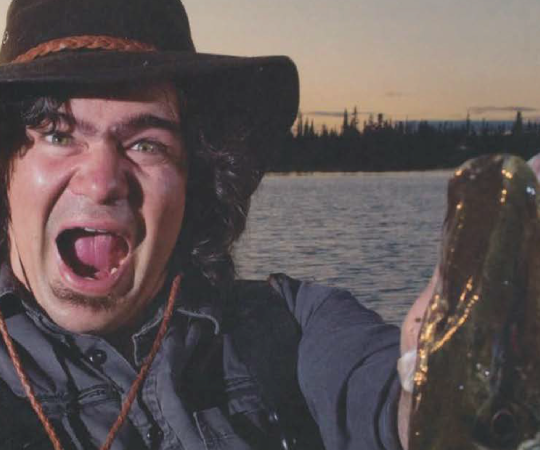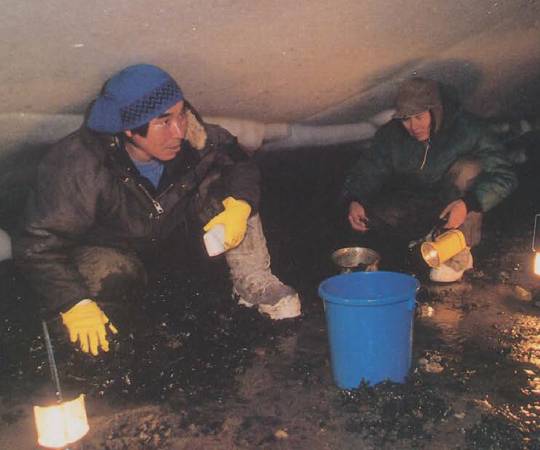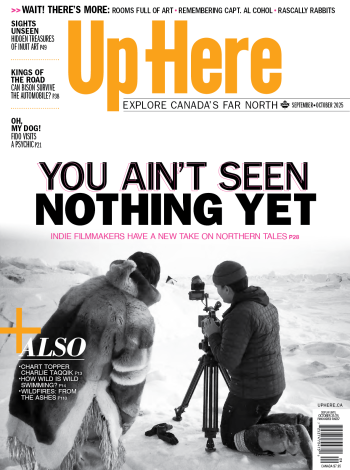The Tr’ondëk Hwëch’in First Nation signed an agreement with Yukon College in 2014 to open a teaching farm to support local agriculture. Now you can buy farm-to-table produce every spring in Dawson City. Farther north, in Old Crow, the Vuntut Gwitchin First Nation is developing a community-driven sustainable energy plan to offset high diesel costs. The partnership with ATCO Electric Yukon will see the energy corporation buy solar energy from the community and source it back to the Vuntut Gwitchin.
Norma Kassi says projects like these are testaments to the value of community-based research because they’re based on community needs and locally directed. She would know. From Old Crow herself, Kassi is a former Vuntut Gwich’in MLA in the Yukon legislative assembly, co-founder of the Whitehorse-based Arctic Institute of Community-Based Research and recently became co-research director of the Canadian Mountain Network, a new alliance of Indigenous and non-Indigenous researchers and communities in Canada’s mountain regions.
“It’s phenomenal how our communities are moving forward, by looking at their own communities, planning for their own communities, talking with their elders and then partnering with non-Indigenous peoples on the outside to say, ‘These are our needs,’” says Kassi. “These communities have done that really well. They’ve taken the lead.”
This type of community research is breaking new ground, says Kassi, because research efforts in the North haven’t always mirrored the wishes, needs, and concerns of Northerners—far from it.
“Indigenous peoples in the North have had difficult experiences with southern researchers. There have been concerns about consent, knowledge management and ownership, about communication and lack of respect,” Kassi says. ˚
While tension between scientists and Northerners remains a reality, new efforts are being made in the North to make sure research is in line with Inuit and First Nations governance and community needs. Kassi is excited and relieved to watch this unfold. In conversation with Up Here, she offers insight into how Northern research is changing for the better.

Up Here: What does community-focused research look like?
Norma Kassi: The way to go about research now is that from the very beginning there has to be a full collaboration and partnership with Indigenous peoples in their communities. They want ownership, they want access, they want control, and they want to be able to own the knowledge and use that knowledge for their own benefit. There’s been a lot of money spent over the years on research that has gone to waste. The research piles up and communities don’t have access to that data. The best-case scenario would be for Indigenous governance to look at their area and identify specific research needs. Then they could find a scientist that is well known and who respects traditional knowledge and bring them in to do the work. Our people are not too interested in doing research that’s not relevant to our communities.
UH: What kind of research is relevant to Northerners?
NK: We want solar, we want wind, we want resources to fight fires—forest fires are getting more regular and our communities are not prepared. They need to have plans and strategies in place. That planning for our homelands should come with a sense of urgency. Research should assist in building protected areas for endangered species and for water that is being polluted. Now, when climate change is reaching a crisis situation, we have related research needs in our communities. Our own research also needs to be recognized. We’ve had scientific ingenuity in our homelands for thousands of years. Now, world leaders are recognizing our knowledge—and that traditional knowledge is profound.
UH: Why are communities in the North experiencing what’s being called “research fatigue?”
NK: For a long time researchers have come into homelands to take knowledge and leave—knowledge of the plants, the aquatic systems and the terrestrial species. They get their degree and they don’t come back. That time has changed. We feel we have been researched to death all across the North. Now our approach is: nothing about us will be without us.
UH: What’s the best process for community research?
NK: We do not go into a community and just start researching. We meet with the elder’s council and the youth council and we get recommendations from community members and representatives from families or clans. Then we create a committee to guide the project. Within our nations we have specific people that have knowledge of specific species, of plants or certain aquatic ecosystems. We ensure that those people are interviewed. When the research is finished, the recommendations that come forth in a community are from their own people and those recommendations are implemented into policy and into action.
UH: What are some ways that research projects can leave lasting benefits in a community when they are over?
NK: Training is huge, especially for youth. Young people need to be involved in every project. And elders need to be adequately resourced—that means paying elders for their work. Our elders should be paid just as a scientist is being paid. We also want to see more trained land guardians to monitor our lands and waters. Land guardianship is growing across the country. We need to cultivate that.
UH: What kind of scientists do communities want to work with?
NK: We need highly qualified personnel for every research project. We also need to cultivate relationships with existing Indigenous academics. We’re going to work with scientists, walk together as two eyes seeing. We have a lot of researchers from the south that do really good research with our communities on taking care of our lands, animals, and fish. We’ve created a bank of good southern researchers already. Those people are well respected in our communities. Those are the researchers we need to work with. There’s also a new wave of younger researchers who are more environmentally cognizant, and who are working on climate change. Those young researchers really want to work with Indigenous peoples. That’s a huge change in this country that’s a big part of reconciliation.
UH: What do researchers who are new to the North need to know?
NK: If you want to come and do research in our communities, it is best that a relationship is built. Trust is a big factor. We don’t want researchers to be afraid to work in the North. Many researchers have good intentions, but they come uninformed. They need to know who to talk to, how governance works for an Indigenous group, and which bodies to build bridges with—like renewable or natural resource councils. Tools and resources to build cultural skills are beginning to be put together by our own people. A National Inuit Strategy on Research developed by Inuit Tapiriit Kanatami is one example of that. And there are free online courses that you can do in a few hours that explore Indigenous history and grievances that can help visitors be more culturally oriented.









